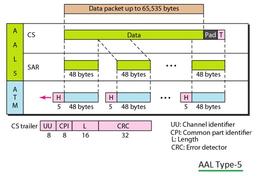ATM Call Signaling: PNNI, UNI, and Message Flow Explained
Advertisement
ATM (Asynchronous Transfer Mode) networks depend on intricate signaling mechanisms to set up, maintain, and tear down connections. Two essential signaling protocols in ATM networks are Private Network-to-Network Interface (PNNI) and User-Network Interface (UNI). These protocols manage the exchange of control messages, ensuring connection management runs smoothly.
In this guide, we’ll dive into the message flow in PNNI and UNI signaling, how these protocols facilitate ATM connections, and their roles in call setup, maintenance, and teardown.
ATM UNI Signaling
 Figure 1: UNI signaling messages exchanged between user and ATM network
Figure 1: UNI signaling messages exchanged between user and ATM network
As shown in Figure 1, the following messages are exchanged between the source host, network, and destination host:
- Setup: Initiates the call setup process.
- Call Proceeding: Indicates that the network is processing the call request.
- Connect: Sent by the destination to indicate the connection is established.
- Connect ACK: Acknowledges the Connect message.
- Release: Initiates the disconnection process.
- Release Complete: Confirms the release of the connection.
ATM PNNI Signaling
 Figure 2: PNNI signaling messages
Figure 2: PNNI signaling messages
Figure 2 illustrates PNNI signaling messages. This type of signaling occurs between private network node interfaces and between private networks. The routing protocol determines the selection of routes based on QoS (Quality of Service) requirements.
PNNI is a signaling protocol responsible for the exchange of messages between switches in private networks. The following messages are exchanged between the source machine, switches (source and transit), and the destination machine:
- Setup: Starts the call setup.
- Call Proceeding: Indicates that the network is working on setting up the call.
- Connect: Signals that the connection has been established.
- Connect ACK: Acknowledges the Connect message.
- Release: Initiates the disconnection.
- Release Complete: Confirms that the connection has been successfully released.
Conclusion
ATM call signaling, especially through PNNI and UNI protocols, is vital for efficiently managing ATM connections. Understanding how these protocols work and the flow of signaling messages enables better network management and optimization. By mastering ATM call signaling, network administrators can ensure reliable and seamless communication across ATM networks, delivering on the promise of high-speed, connection-oriented data transfer.
Advertisement
 RF
RF


